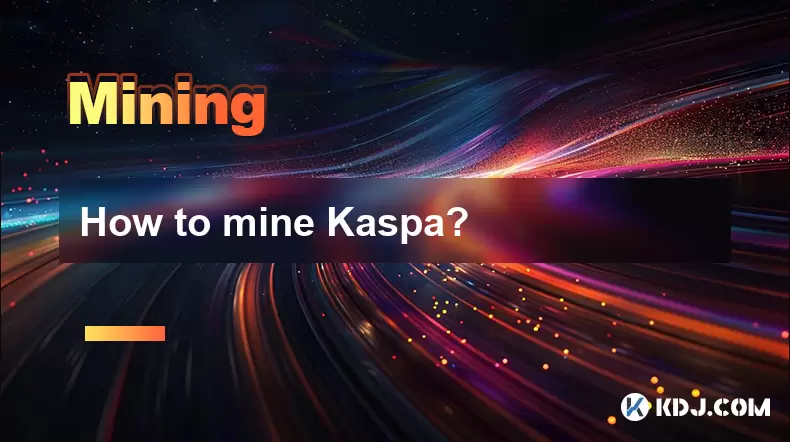-
 Bitcoin
Bitcoin $117900
-0.69% -
 Ethereum
Ethereum $3805
0.15% -
 XRP
XRP $3.122
-0.69% -
 Tether USDt
Tether USDt $0.9999
-0.01% -
 BNB
BNB $799.9
-3.98% -
 Solana
Solana $180.7
-2.08% -
 USDC
USDC $0.9999
0.00% -
 Dogecoin
Dogecoin $0.2233
-1.97% -
 TRON
TRON $0.3368
2.32% -
 Cardano
Cardano $0.7826
-1.49% -
 Hyperliquid
Hyperliquid $43.31
-1.57% -
 Sui
Sui $3.794
-4.29% -
 Stellar
Stellar $0.4198
-1.36% -
 Chainlink
Chainlink $17.77
-2.49% -
 Bitcoin Cash
Bitcoin Cash $565.7
-2.56% -
 Hedera
Hedera $0.2600
-4.31% -
 Avalanche
Avalanche $24.11
-3.73% -
 UNUS SED LEO
UNUS SED LEO $8.967
-0.06% -
 Toncoin
Toncoin $3.420
4.72% -
 Litecoin
Litecoin $108.3
-1.15% -
 Ethena USDe
Ethena USDe $1.001
-0.01% -
 Shiba Inu
Shiba Inu $0.00001305
-2.86% -
 Uniswap
Uniswap $10.35
-0.66% -
 Polkadot
Polkadot $3.892
-3.11% -
 Monero
Monero $314.7
-1.15% -
 Dai
Dai $1.000
0.02% -
 Bitget Token
Bitget Token $4.508
-2.46% -
 Pepe
Pepe $0.00001155
-3.11% -
 Cronos
Cronos $0.1427
-1.72% -
 Aave
Aave $282.2
-2.64%
How to mine Kaspa?
Kaspa mining uses ASICs and the kHeavyHash algorithm on a 1-second block time BlockDAG, requiring pool participation for profitable rewards.
Jul 30, 2025 at 01:01 am

Understanding Kaspa and Its Mining Mechanism
Kaspa is a high-speed, scalable blockchain built on the BlockDAG (Directed Acyclic Graph) structure, which allows it to achieve significantly faster block generation times compared to traditional blockchain systems. Unlike Bitcoin, which produces a block every 10 minutes, Kaspa generates a block every one second, enabling rapid transaction processing and confirmation. This unique architecture is powered by the GHOSTDAG protocol, which ensures security and consistency across the distributed network.
The mining process in Kaspa relies on Proof of Work (PoW), similar to Bitcoin, but optimized for its BlockDAG framework. Miners compete to solve cryptographic puzzles using computational power, and successful solutions are added to the DAG structure. The primary hashing algorithm used in Kaspa mining is kHeavyHash, a variant of SHA-256 designed to be ASIC-friendly and resistant to GPU dominance, promoting a more decentralized mining environment.
To participate in mining, users must understand that Kaspa does not support solo mining effectively due to the high difficulty and network competition. Instead, miners typically join mining pools to combine hash power and receive consistent rewards based on contributed work.
Required Hardware for Kaspa Mining
Mining Kaspa efficiently requires specialized hardware due to the nature of the kHeavyHash algorithm. The most effective devices are ASIC (Application-Specific Integrated Circuit) miners designed specifically for SHA-256-based algorithms. While some early-stage mining experiments used GPUs, they are not competitive in terms of hashrate or energy efficiency.
Popular ASIC models compatible with Kaspa mining include:
- Bitmain Antminer K7
- InnoSilicon A10X
- Goldshell KD5
These devices offer hashrates ranging from 2 TH/s to over 10 TH/s, with power consumption between 1500W to 3000W. When selecting hardware, consider the hashrate-to-power ratio, as electricity costs significantly impact profitability. Ensure your mining rig is equipped with adequate cooling and a stable power supply, as continuous operation generates substantial heat.
It is essential to verify that your chosen ASIC supports kHeavyHash through firmware updates. Some manufacturers release specific firmware versions for Kaspa mining, which must be flashed onto the device before connecting to a pool.
Setting Up a Mining Pool Account
Since solo mining is impractical, joining a mining pool is the standard approach. A mining pool aggregates the computational power of multiple miners and distributes rewards proportionally. To get started:
- Choose a reputable Kaspa mining pool such as k1pool.org, kaspa.poolin.com, or sparkpool.com/kaspa
- Navigate to the pool’s website and create an account, or use a wallet address as your identifier
- Generate a worker name and password for your mining rig
- Note the pool’s stratum URL and port number, which will be used in your miner configuration
Most pools operate on a PPLNS (Pay Per Last N Shares) reward system, meaning payouts depend on the number of valid shares submitted over a recent window. Pools typically charge a fee between 0.5% to 2% of mined rewards.
After registration, monitor your dashboard to track hashrate, accepted shares, and estimated earnings. Pools provide real-time statistics and payout history, allowing miners to optimize performance.
Configuring Your Mining Software
Once hardware and pool access are ready, the next step is configuring the mining software. Most ASICs come with built-in firmware that allows direct configuration via a web interface. Access your miner by:
- Connecting the ASIC to your local network via Ethernet
- Finding its IP address using your router’s admin panel or a network scanner
- Entering the IP into a web browser to access the miner’s dashboard
In the configuration section, input the following details:
- Pool URL: e.g.,
stratum+tcp://k1pool.org:4416 - Worker Username: e.g.,
kaspa_wallet_address.worker1 - Worker Password: often left blank or set to
x - Failover Pools: optional backup pool addresses
Save the settings and reboot the miner. The device will begin connecting to the pool and submitting shares. Monitor the hashrate display to confirm stable operation. If the hashrate is below expectations or connection fails, verify network stability, correct pool settings, and firmware compatibility.
For advanced users, custom mining software like kawpowminer or GMiner can be used with compatible hardware, though ASIC firmware remains the most reliable method.
Wallet Setup for Receiving Kaspa Rewards
To receive mining payouts, you need a Kaspa wallet that supports the native $KAS token. The official Kaspa Wallet (Qtum-based GUI wallet) and command-line wallet (kaspad) are the most secure options. Alternatively, lightweight wallets like Kaspa Community Wallet (Web or Desktop) offer user-friendly interfaces.
To set up a wallet:
- Download the wallet software from the official Kaspa GitHub repository or trusted community sources
- Install and launch the application
- Generate a new wallet address and securely back up the seed phrase
- Copy your KAS receiving address to use in the mining pool configuration
Payouts are typically sent automatically when your balance exceeds the pool’s minimum payout threshold, usually between 0.1 to 1 KAS. Transactions appear on the blockchain within seconds due to Kaspa’s fast block times. Always verify the destination address before initiating large transfers.
Monitoring and Optimizing Mining Performance
Continuous monitoring ensures maximum efficiency and uptime. Most mining pools provide dashboards showing real-time hashrate, share acceptance rate, and earnings. Compare your reported hashrate with the ASIC’s rated performance; a significant discrepancy may indicate overheating, unstable power, or network latency.
To optimize:
- Ensure firmware is up to date to benefit from performance improvements
- Adjust voltage and frequency settings (if supported) to balance power consumption and output
- Maintain optimal ambient temperature (below 30°C) and use additional fans if necessary
- Use dual pool configurations to maintain mining activity during primary pool downtime
Regularly check for stale shares or rejected submissions, which may indicate high ping or connection issues. Reducing network latency by placing the miner on a wired connection close to the router can improve stability.
Frequently Asked Questions
Can I mine Kaspa with a GPU?
While technically possible with experimental software, GPU mining is not profitable for Kaspa due to the dominance of ASICs and the design of kHeavyHash. GPUs produce extremely low hashrates compared to ASICs, making electricity costs exceed potential rewards.
What happens if my miner disconnects from the pool?
If the connection drops, the miner will attempt to reconnect automatically. If using failover pools, it will switch to a backup. During disconnection, no shares are submitted, so mining time is lost. Ensure stable internet and consider using a dedicated connection.
How often are payouts distributed?
Payout frequency depends on the pool and your earnings. Most pools send payouts every few hours once your balance reaches the minimum threshold. Some pools offer instant payouts for small fees.
Is Kaspa mining legal in my country?
Mining legality depends on local regulations. In most countries, cryptocurrency mining is permitted, but check your regional laws regarding energy use, taxation, and financial reporting. Avoid regions with outright bans on crypto activities.
Disclaimer:info@kdj.com
The information provided is not trading advice. kdj.com does not assume any responsibility for any investments made based on the information provided in this article. Cryptocurrencies are highly volatile and it is highly recommended that you invest with caution after thorough research!
If you believe that the content used on this website infringes your copyright, please contact us immediately (info@kdj.com) and we will delete it promptly.
- Coinbase, Circle, and the Power of Partnership: A New Era for Crypto?
- 2025-07-30 12:30:12
- Manyu Mania: Riding the Wave of the #FreeManyu Cryptocurrency Movement
- 2025-07-30 12:30:12
- Bitcoin Price Drop: Navigating the Dip with Corporate Strategies
- 2025-07-30 07:30:12
- BNB's Bullish Cycle: ChatGPT Weighs In on the Future
- 2025-07-30 06:50:12
- XRP's Wild Ride: Open Interest, Price Crash Fears, and What's Next
- 2025-07-30 07:50:12
- SEC Greenlights In-Kind Creations: A Game Changer for Bitcoin ETPs?
- 2025-07-30 07:50:12
Related knowledge

What was the highest APY for IRON mining?
Jul 23,2025 at 05:14am
Understanding IRON Token and Its Mining MechanismThe IRON token is a stablecoin that operates within the Iron Finance ecosystem, primarily on blockcha...

What is impermanent loss in IRON pools?
Jul 23,2025 at 09:00am
Understanding Impermanent Loss in the Context of IRON PoolsImpermanent loss is a phenomenon that affects liquidity providers in decentralized finance ...

How to claim rewards from IRON mining?
Jul 23,2025 at 02:21pm
Understanding IRON Mining and Reward MechanismsIRON Finance operated as a decentralized finance (DeFi) protocol on the Polygon and Binance Smart Chain...

How to claim rewards from IRON mining?
Jul 29,2025 at 05:07am
Understanding IRON Mining and Reward MechanismIRON is a dual-token system designed to stabilize the value of a synthetic asset through a combination o...

IRON mining tutorial for beginners
Jul 27,2025 at 12:01am
What Is IRON and How Does It Work in the Cryptocurrency Ecosystem?IRON is a cryptocurrency token that operates on the Binance Smart Chain (BSC) and is...

How to calculate APY for IRON mining?
Jul 28,2025 at 09:49am
Understanding APY in the Context of IRON Token MiningWhen engaging in IRON token mining within decentralized finance (DeFi) platforms, Annual Percenta...

What was the highest APY for IRON mining?
Jul 23,2025 at 05:14am
Understanding IRON Token and Its Mining MechanismThe IRON token is a stablecoin that operates within the Iron Finance ecosystem, primarily on blockcha...

What is impermanent loss in IRON pools?
Jul 23,2025 at 09:00am
Understanding Impermanent Loss in the Context of IRON PoolsImpermanent loss is a phenomenon that affects liquidity providers in decentralized finance ...

How to claim rewards from IRON mining?
Jul 23,2025 at 02:21pm
Understanding IRON Mining and Reward MechanismsIRON Finance operated as a decentralized finance (DeFi) protocol on the Polygon and Binance Smart Chain...

How to claim rewards from IRON mining?
Jul 29,2025 at 05:07am
Understanding IRON Mining and Reward MechanismIRON is a dual-token system designed to stabilize the value of a synthetic asset through a combination o...

IRON mining tutorial for beginners
Jul 27,2025 at 12:01am
What Is IRON and How Does It Work in the Cryptocurrency Ecosystem?IRON is a cryptocurrency token that operates on the Binance Smart Chain (BSC) and is...

How to calculate APY for IRON mining?
Jul 28,2025 at 09:49am
Understanding APY in the Context of IRON Token MiningWhen engaging in IRON token mining within decentralized finance (DeFi) platforms, Annual Percenta...
See all articles

























































































